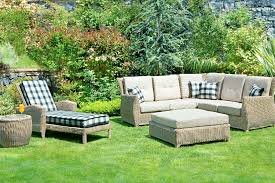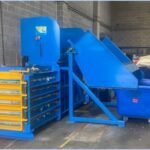When it comes to outdoor design, durability isn’t just a preference—it’s a necessity. The elements can be unforgiving, and inferior materials often look great at first but degrade quickly due to exposure to sunlight, rain, snow, and temperature fluctuations. Using durable materials in your outdoor projects, whether for patios, furniture, or landscaping, ensures that your investment not only looks good but also stands the test of time.
This blog explores why durable materials are crucial for long-lasting outdoor designs, practical tips for making the right material choices, and how combining aesthetics with resilience can elevate your outdoor spaces.
The Case for Durability in Outdoor Designs
Outdoor spaces are a reflection of your style. Whether it’s a sleek modern patio or a lush garden retreat, the materials you use create the foundation for your design. But these materials face a constant barrage of weather, usage, and time.
Choosing durable options such as weather-resistant woods, composite decking, or heavy-duty metals reduces the risk of frequent maintenance and replacements. Investing in quality once can save you considerable expense and effort over the years.
Why Cheap Doesn’t Mean Cheerful
While going for low-cost materials may seem appealing upfront, cutting corners in your material selection often leads to higher long-term costs. For example, untreated wood may initially cost less than a weather-resistant hardwood. However, after facing months of rain or snow, untreated wood can warp, crack, or rot, necessitating repairs or even complete replacement. Durable materials like ipe wood or aluminum might come at a premium, but their extended lifespan makes them the more economical choice in the long run.
Top Durable Materials for Outdoor Design
1. Weather-Resistant Wood
Teak, cedar, and ipe are excellent choices for outdoor furniture and decking. Not only do they resist decay and insects, but their natural oils offer further protection from harsh environmental elements. Teak, for instance, has a high natural oil content that prevents water absorption, helping it withstand rain and humidity effortlessly.
2. Composite and PVC Decking
Composite decking combines wood fibers with polymers, delivering the look of natural wood but with added resistance to warping, splintering, and fading. PVC decking, on the other hand, is a fully synthetic option that’s moisture-resistant, easy-to-clean, and incredibly durable.
3. Quality Metals
When it comes to metals, cast aluminum, stainless steel, and wrought iron are some of the most robust choices. Aluminum, for instance, is lightweight, resistant to rust, and can easily be powder-coated for added durability. For a more classic aesthetic, stainless steel and wrought iron bring unmatched strength and longevity with proper care.
4. Stone and Concrete
Natural stone such as granite, limestone, or slate makes for stunning and durable patio floors, walkways, and outdoor counters. Concrete, especially stamped or sealed concrete, is another excellent alternative that’s both customizable and budget-friendly. Both options can easily hold up to heavy foot traffic and changing seasons.
5. All-Weather Fabrics
While focusing on structural elements, don’t overlook outdoor textiles. Opt for weather-resistant fabrics like Sunbrella, which repel water, resist fading, and look fresh season after season. These materials are particularly valuable for outdoor cushions and umbrellas.
How Durable Materials Complement Functionality and Style
One of the biggest myths in outdoor design is that durable materials compromise aesthetics. That’s far from the truth. Today’s market is filled with resilient options that don’t skimp on beauty. Composite decking mimics the warmth of natural wood, and modern concrete designs can be crafted to resemble marble or other luxurious materials. High-end outdoor fabrics allow you to add vibrant colors or patterns without worrying about them fading in the sun.
Durable materials strike a balance between function and design. For instance, a sturdy cast-aluminum dining set painted in a sleek black finish lends both elegance and longevity to a patio setup. Similarly, weatherproof cushions with bold stripes or floral accents can make your outdoor space cozy and stylish, all while resisting the wear and tear of daily use.
Questions to Ask When Choosing Materials
When deciding which materials to use for your outdoor design, ask yourself these questions:
- Will this material withstand the weather in my area? Cold climates with snow and ice require frost-resistant materials, while hot, sunny climates may demand UV-resistant options.
- How much maintenance will it require? Some materials, like teak wood or natural stone, will require periodic sealing to maintain their look, while others like composite decking are nearly maintenance-free.
- Is it eco-friendly? Many durable materials, like sustainably harvested woods and recycled metals, are environmentally responsible choices.
- Will it fit my budget? While initial costs might be higher, think about the total lifetime cost, including maintenance and replacements.
Elevate Landscape Projects with Durable Choices
Durable materials aren’t just for patios or furniture—they’re also vital for landscape elements. Choosing high-quality soil, mulch, or top-level fill dirt can ensure your plants and garden pathways thrive for years. If you need supplies for landscape projects, consider sourcing from reliable providers offering topsoil delivery in Salt Lake City for added convenience.
By combining quality materials with expert planning, you don’t just create a beautiful outdoor space—you create a space that lasts.
Final Thoughts on Long-Lasting Outdoor Designs
Whether you’re designing a small backyard patio or a large outdoor entertainment area, the materials you choose set the stage for how the space will function and age over time. Prioritizing durable materials ensures that your outdoor designs will not only look exceptional but will also stand up to years of use and weather conditions.
Durability isn’t just a feature—it’s an investment. Start by selecting materials that align with your aesthetic, climate, and lifestyle, and you’ll craft an outdoor space that continues to impress season after season.






